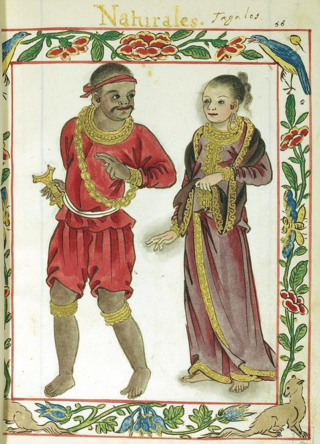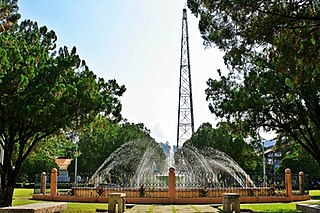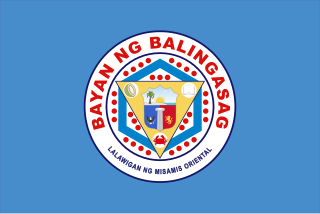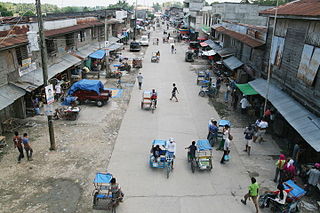Related Research Articles

A barangay, historically referred to as barrio, is the smallest administrative division in the Philippines and is the native Filipino term for a village, district, or ward. In metropolitan areas, the term often refers to an inner city neighborhood, a suburb, or a suburban neighborhood or even a borough. The word barangay originated from balangay, a type of boat used by a group of Austronesian peoples when they migrated to the Philippines.

Datu is a title which denotes the rulers of numerous indigenous peoples throughout the Philippine archipelago. The title is still used today, especially in Mindanao, Sulu and Palawan, but it was used much more extensively in early Philippine history, particularly in the regions of Central and Southern Luzon, the Visayas and Mindanao. It is a cognate of the title ratu in several other Austronesian languages.

Kalamansig, officially the Municipality of Kalamansig, is a 1st class municipality in the province of Sultan Kudarat, Philippines. According to the 2020 census, it has a population of 50,900 people.

Sitangkai, officially the Municipality of Sitangkai, is a 1st class municipality in the province of Tawi-Tawi, Philippines. According to the 2020 census, it has a population of 37,319 people.

Tulunan, officially the Municipality of Tulunan, is a 2nd class municipality in the province of Cotabato, Philippines. According to the 2020 census, it has a population of 60,978 people.

Ampatuan, officially the Municipality of Ampatuan, is a 4th class municipality in the province of Maguindanao del Sur, Philippines. According to the 2020 census, it has a population of 28,941 people.

Datu Abdullah Sangki, officially the Municipality of Datu Abdullah Sangki, is a municipality in the province of Maguindanao del Sur, Philippines. According to the 2020 census, it has a population of 30,117 people.

Datu Odin Sinsuat, officially the Municipality of Datu Odin Sinsuat, is a 2nd class municipality and capital of the province of Maguindanao del Norte, Philippines. According to the 2020 census, it has a population of 116,768 people.

Kibawe, officially the Municipality of Kibawe, is a 2nd class municipality in the province of Bukidnon, Philippines. According to the 2020 census, it has a population of 41,897 people.

Kitaotao, officially the Municipality of Kitaotao, is a 1st class municipality in the province of Bukidnon, Philippines. According to the 2020 census, it has a population of 53,796 people.

Balingasag, officially the Municipality of Balingasag, is a 2nd class municipality in the province of Misamis Oriental, Philippines. According to the 2020 census, it has a population of 74,385 people.

Datu Piang, officially the Municipality of Datu Piang, is a 2nd class municipality in the province of Maguindanao del Sur, Philippines. According to the 2020 census, it has a population of 28,380 people.

Datu Saudi Ampatuan, officially the Municipality of Datu Saudi Ampatuan, is a 4th class municipality in the province of Maguindanao del Sur, Philippines. According to the 2020 census, it has a population of 31,060 people.

Datu Unsay, officially the Municipality of Datu Unsay, is a 5th class municipality in the province of Maguindanao del Sur, Philippines. According to the 2020 census, it has a population of 12,890 people.

Tolosa, officially the Municipality of Tolosa, is a 5th class municipality in the province of Leyte, Philippines. According to the 2020 census, it has a population of 20,708 people.

Datu Blah T. Sinsuat, officially the Municipality of Datu Blah T. Sinsuat, is a municipality in the province of Maguindanao del Norte, Philippines. According to the 2020 census, it has a population of 28,243 people.

The Tagalog maginoo, the Kapampangan ginu, and the Visayan tumao were the nobility social class among various cultures of the pre-colonial Philippines. Among the Visayans, the tumao were further distinguished from the immediate royal families, the kadatuan.

In early Philippine history, Barangay is the term historically used by scholars to describe the complex sociopolitical units which were the dominant organizational pattern among the various peoples of the Philippine archipelago in the period immediately before the arrival of European colonizers.

Datu Hoffer Ampatuan, officially the Municipality of Datu Hoffer Ampatuan, is a municipality in the province of Maguindanao del Sur, Philippines. According to the 2020 census, it has a population of 26,660 people.
Datu Salibo, officially the Municipality of Datu Salibo, is a municipality in the province of Maguindanao del Sur, Philippines. According to the 2020 census, it has a population of 18,795 people.
References
- ↑ Agoncillo, Teodoro A.; Oscar M. Alfonso; Milagros Guerrero (1970). History of the Filipino people. Malaya books. p. 47. Retrieved 2008-08-12.
- ↑ Laput, Ernesto J. "Buhay sa Nayon". Pinas: Munting Kasaysayan Ng Pira-pirasong Bayan. Retrieved 2007-08-06.
- Scott, William Henry (1994). Barangay: Sixteenth Century Philippine Culture and Society. Quezon City: Ateneo de Manila University Press. ISBN 971-550-135-4.